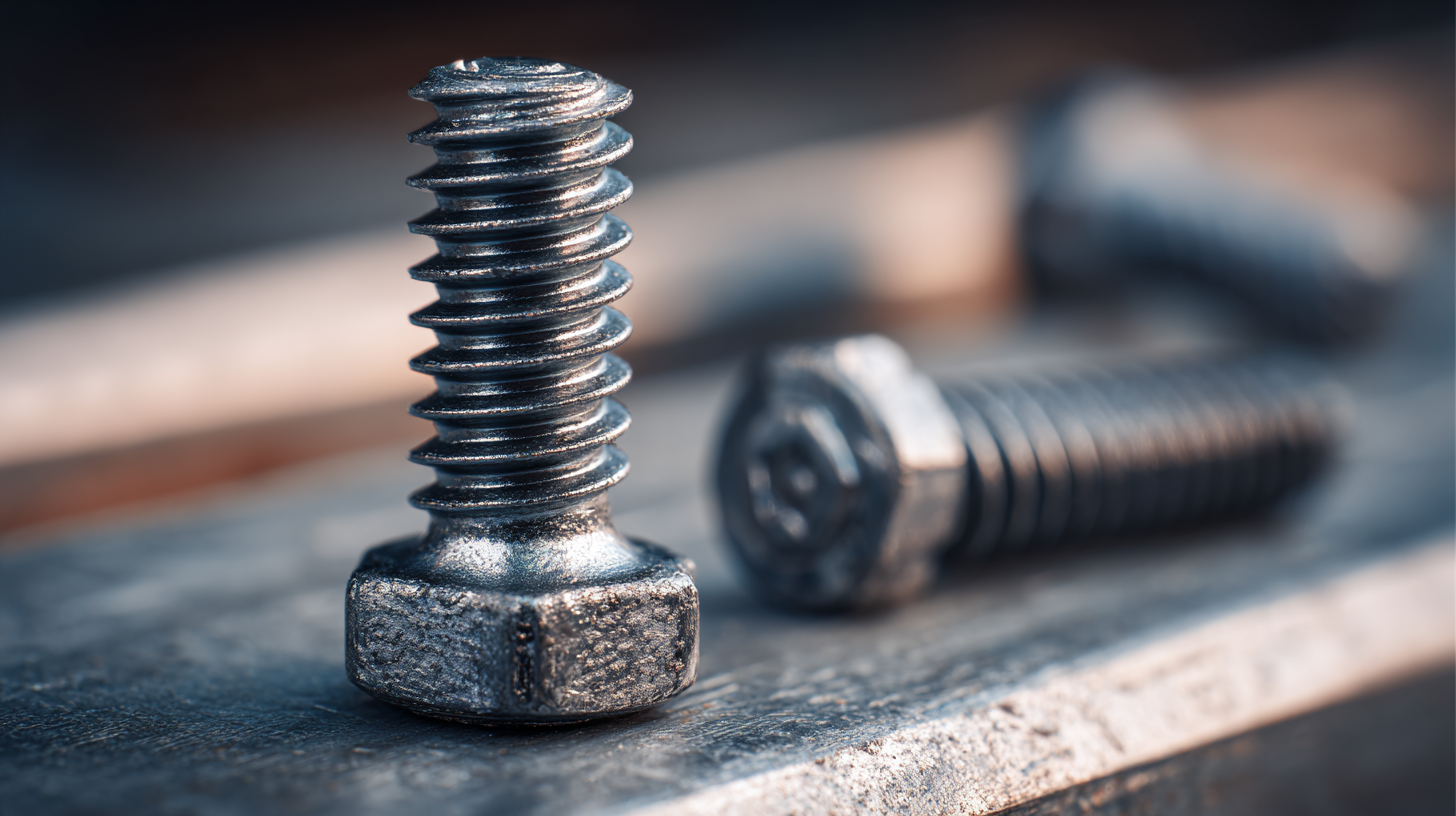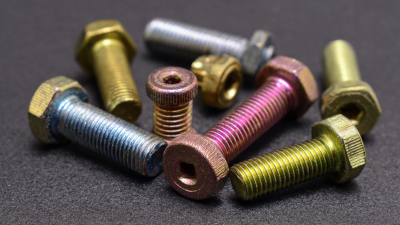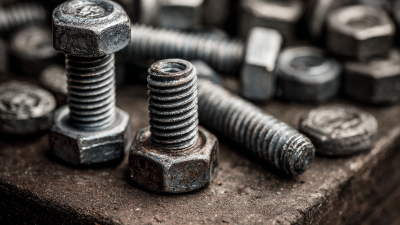Understanding the Importance of Torx Screws in Modern Engineering
In today's fast-paced world of modern engineering, the choice of fasteners can significantly impact both the efficiency and integrity of a project. Among these fasteners, the Torx screw stands out due to its unique design and exceptional performance. Characterized by a star-shaped socket that allows for improved grip and torque, Torx screws are increasingly favored in various applications, from automotive to electronics. Their ability to minimize slippage and reduce the risk of stripping makes them an essential tool for engineers and technicians alike.

As we delve into the nuances of Torx screws, we will explore their advantages, applications, and the reasons behind their growing popularity in the engineering sector, highlighting their vital role in ensuring reliability and durability in today's innovative designs.
The Evolution of Screws: Why Torx Became Essential in Engineering
The evolution of screws has seen numerous designs aimed at improving efficiency and reliability in modern engineering applications. Among these innovations, Torx screws have gained significant traction due to their unique star-shaped drive, which allows for greater torque transfer compared to traditional screw designs. According to a report by the Fastener Technology International, the adoption of Torx screws in various industries increased by over 30% from 2015 to 2022, largely attributed to their ability to minimize cam-out—an issue prevalent with Phillips or flat-head screws.
This increased effectiveness has made Torx screws particularly essential in manufacturing and assembly processes where precision is critical. High torque specifications are often required, and utilizing a Torx screw can ensure that the needed force is applied without risking damage to the screw head. As noted in a recent interview with an R&D engineer, proper torque wrench usage alongside Torx fasteners can lead to a more secure assembly, directly impacting product longevity and performance. This revolution in fastener design underscores the importance of choosing the right tools and components for the ever-evolving demands of engineering projects.
Understanding the Evolution and Importance of Torx Screws
This chart demonstrates the increasing adoption of Torx screws over traditional screw types in various engineering sectors from 2015 to 2023.
The Mechanics Behind Torx Screws: Design that Enhances Performance
 Torx screws, characterized by their distinct star-shaped drive, offer several mechanical advantages in modern engineering applications. The innovative design of Torx screws reduces the risk of stripping compared to traditional slotted or Phillips screws. This is due to the increased surface area of contact between the driver and the screw, which allows for higher torque transfer without damaging the screw head. As a result, engineers can achieve more secure fastening in various materials, leading to enhanced reliability in critical assemblies.
Torx screws, characterized by their distinct star-shaped drive, offer several mechanical advantages in modern engineering applications. The innovative design of Torx screws reduces the risk of stripping compared to traditional slotted or Phillips screws. This is due to the increased surface area of contact between the driver and the screw, which allows for higher torque transfer without damaging the screw head. As a result, engineers can achieve more secure fastening in various materials, leading to enhanced reliability in critical assemblies.
Moreover, the unique shape of Torx screws promotes better alignment and stability during the fastening process. This design aspect minimizes wobbling and slipping, which can often occur with other screw types, especially when subjected to high levels of vibration. Consequently, many industries, from automotive to electronics, have adopted Torx screws to improve assembly efficiency and product durability. The mechanics behind Torx screws exemplify how thoughtful design can lead to superior performance, illustrating their essential role in the evolution of engineering practices.
Common Applications of Torx Screws in Modern Engineering Projects
Torx screws, known for their distinct star-shaped drive, have become increasingly vital in modern engineering projects. Their design allows for higher torque transfer compared to traditional Phillips or flat-head screws, which is particularly advantageous in applications requiring precision and durability. This makes them ideal for critical components in handheld devices, automotive assemblies, and furniture manufacturing, where secure fastening is essential.
Recent advancements, such as the introduction of new sizes in handheld enclosures, have highlighted the utility of Torx screws even further. These enclosures often utilize Torx screws to ensure that the components remain tightly secured, preventing any accidental loosening due to vibration or movement. Additionally, in the cycling industry, there has been a growing recognition of the benefits of Torx screws for improving the overall user experience, as they offer better grip and reduced chances of stripping compared to their counterparts.
As engineering continues to evolve, the adoption of Torx screws will likely expand, enhancing the performance and reliability of various modern engineering projects.
Key Advantages of Using Torx Screws Over Traditional Fasteners
Torx screws have emerged as a vital component in modern engineering, offering distinct advantages over traditional fasteners like hex or Phillips screws. One of the most significant benefits is their design, which features a star-shaped pattern that enhances grip and reduces the likelihood of slipping. This design allows for higher torque application, leading to a more secure fastening. Additionally, Torx screws usually come with resistances to cam-out, minimizing the wear and tear on both the screw and the tool.
Tips for using Torx screws effectively include selecting the correct size bit for the screw to prevent damage during installation. Also, it's advisable to use a power tool with adjustable torque settings, especially for soft materials, to avoid overtightening. Lastly, ensuring that the screw is aligned properly before driving it in can drastically improve installation efficiency.
Moreover, Torx screws offer improved longevity compared to traditional fasteners. The reduced risk of damage during installation means fewer replacements and less maintenance over time. When working on projects involving vibrations or dynamic loads, consider using Torx screws for their enhanced reliability and performance.
Understanding the Importance of Torx Screws in Modern Engineering - Key Advantages of Using Torx Screws Over Traditional Fasteners
| Feature | Torx Screws | Traditional Fasteners |
|---|---|---|
| Torque Resistance | High torque capability with reduced risk of slippage | Moderate torque capability with increased risk of stripping |
| Drive Head Design | Unique star shape allows for easier engagement | Standard slot or Phillips, which can slip under load |
| Durability | Resistant to wear and stripping over time | Prone to damage and wear, especially with frequent use |
| Ease of Use | Easy to install with power tools, less physical effort | Can require more physical effort and time to install |
| Applications | Widely used in automotive, electronics, and machinery | Used in general construction and home appliances |
Tips for Selecting and Installing Torx Screws: Best Practices for Efficiency
When selecting Torx screws, it's essential to consider factors such as size, material, and coating. The size of the Torx drive not only affects the compatibility with tools but also influences torque transmission, which is crucial for achieving the correct fastening strength. It's advisable to refer to a thorough sizing chart to ensure the right match for your project, as larger sizes typically provide greater torque without stripping, making them ideal for heavy-duty applications.

During the installation process, utilizing the appropriate Torx driver is key to maximizing efficiency and ensuring a secure fit. Always ensure the driver is seated correctly in the screw head to prevent cam-out, which can damage both the screw and the tool. Additionally, consider using a power tool with adjustable torque settings, as this can help to achieve consistent results without over-tightening, which is critical in maintaining the integrity of the materials being fastened. Following these best practices can streamline installation, improving both performance and lifespan of your projects.
Related Posts
-

7 Best Button Head Bolt Options for Ultimate Performance
-

7 Best Tips for Choosing the Right Stainless Bolt for Your Project
-

7 Compelling Reasons Why Square Neck Bolts Are Essential for Your Projects
-

The Ultimate Guide to Choosing the Right Furniture Screw for Your Projects
-

Ultimate Guide to Choosing the Right Hot Sale Carriage Bolt for Your Projects
-

7 Tips for Choosing the Right Button Head Bolt for Your Project
